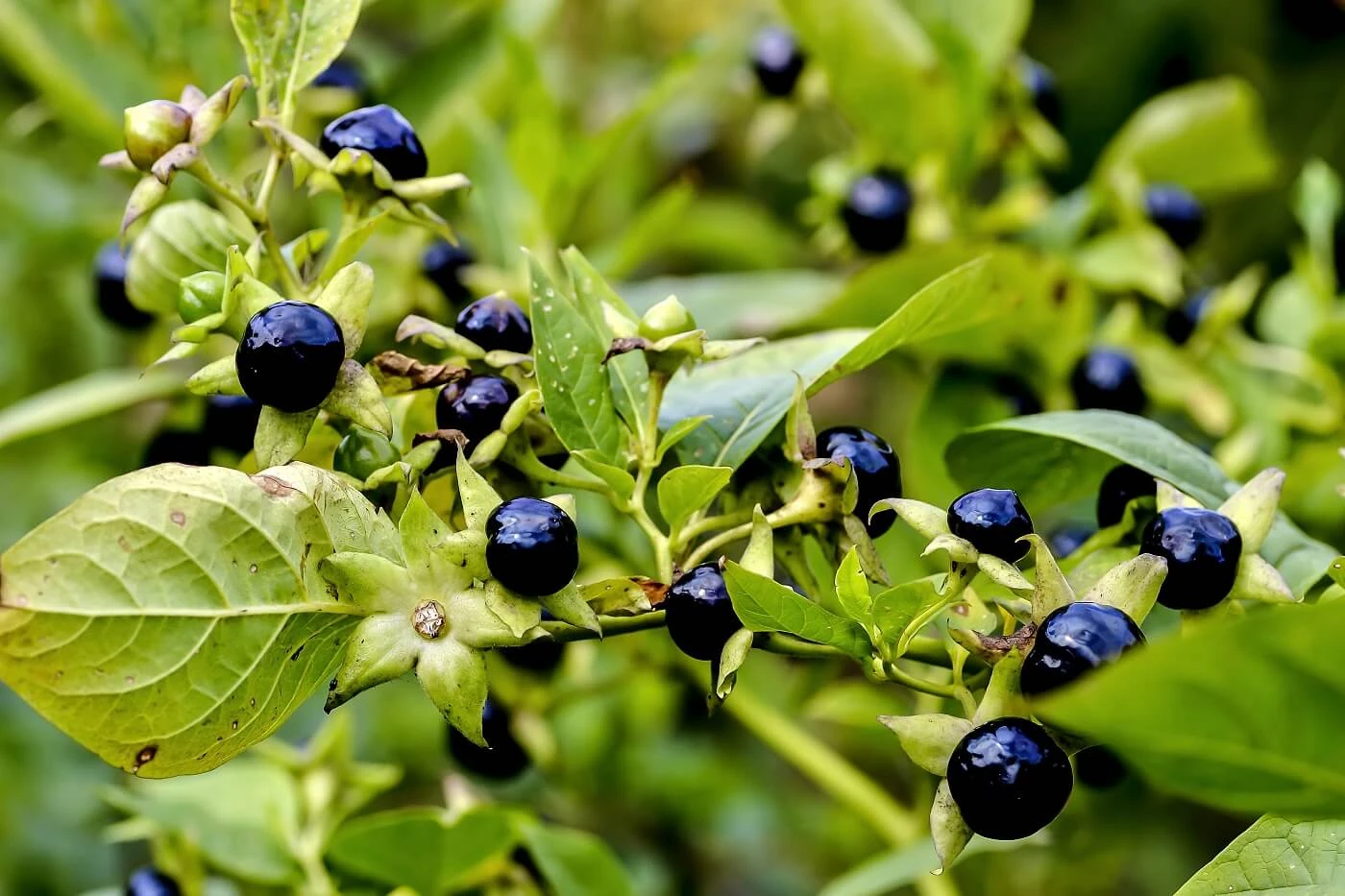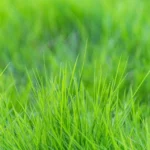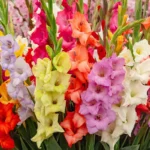
Deadly nightshade, scientifically known as Atropa belladonna, is a plant shrouded in both fascination and fear. With its striking appearance and potent toxicity, this herbaceous perennial has captured the imagination of cultures throughout history. From its origins in Europe, North Africa, and Western Asia to its diverse uses in medicine, cosmetics, and folklore, deadly nightshade has left an indelible mark on human civilization. In this exploration, we delve into the intriguing facets of deadly nightshade, uncovering its botanical characteristics, historical significance, pharmacological properties, and modern applications. Join us on a journey through the mysterious world of deadly nightshade, where beauty and danger converge in a captivating botanical tale.
Deadly nightshade (Atropa belladonna) is native to Europe, North Africa, and parts of Western Asia: Atropa belladonna, commonly known as deadly nightshade, is a perennial herbaceous plant belonging to the Solanaceae family. It typically grows in shaded, moist environments such as woodland areas. Its native range encompasses regions across Europe, extending into North Africa and parts of Western Asia. The plant can reach heights of up to six feet and is characterized by its distinctive bell-shaped flowers and glossy black berries. Throughout history, deadly nightshade has been both revered for its medicinal properties and feared for its toxic effects.
All parts of the deadly nightshade plant are poisonous, but the berries are especially so: Every part of the deadly nightshade plant, including the leaves, stems, and roots, contains toxic alkaloids, but the berries are particularly potent. These alkaloids, such as atropine, scopolamine, and hyoscyamine, can cause severe poisoning if ingested. The berries, often mistaken for edible fruits due to their attractive appearance, pose a significant risk, especially to children who may be tempted to consume them.
Just 2-5 berries can be fatal to a child, while adults would require 10-20 berries for lethal poisoning: The toxicity of deadly nightshade berries is such that even a small quantity can lead to fatal poisoning, particularly in children. Ingesting as few as 2 to 5 berries can be enough to cause death in a child, while adults may tolerate slightly higher doses, with lethal poisoning typically occurring after ingesting 10 to 20 berries. However, the exact number of berries required to induce fatal poisoning can vary depending on factors such as the individual’s age, weight, and overall health.
The attractive red berries are responsible for most deadly nightshade poisoning incidents, as they are mistaken for edible berries like cherries or blueberries: One of the main reasons for deadly nightshade poisoning incidents is the mistaken identity of its berries. The vibrant red hue of the berries, coupled with their resemblance to other edible fruits like cherries or blueberries, often leads to accidental ingestion. This confusion is particularly prevalent among children, who may be drawn to the appealing appearance of the berries without understanding the associated danger.
The name belladonna comes from the Italian words “bella donna,” meaning “beautiful woman,” as the nightshade extract was once used to dilate the pupils, creating a more alluring appearance: The name “belladonna” has its origins in Italian, with “bella donna” translating to “beautiful woman.” This moniker reflects the historical use of deadly nightshade extract for cosmetic purposes. In ancient times, women would apply dilute solutions of the plant extract to their eyes to achieve pupil dilation, a practice believed to enhance their attractiveness by giving them a wide-eyed, doe-eyed appearance.
In the Middle Ages, deadly nightshade was an ingredient in some eye drops used to achieve pupil dilation for cosmetic purposes: During the Middle Ages, deadly nightshade gained popularity as a key ingredient in cosmetic preparations intended to enhance the appearance of the eyes. Eye drops containing diluted extracts of the plant were used to induce pupil dilation, a sought-after aesthetic trait believed to be synonymous with beauty and allure. However, the use of such preparations was not without risk, as the toxic nature of deadly nightshade posed potential harm to those who applied them.
Egyptians and Assyrians used deadly nightshade as a pain reliever and paralytic as early as 3000 BC: The historical use of deadly nightshade dates back to ancient civilizations, with evidence suggesting its medicinal and ritualistic significance as far back as 3000 BC. Both the Egyptians and Assyrians recognized the plant’s pharmacological properties and utilized it as a pain reliever and paralytic agent. Ancient texts and archaeological findings indicate that preparations derived from deadly nightshade were employed in various medical treatments and religious ceremonies, highlighting its cultural importance in early societies.
Romans used the nightshade extract as a poison for arrows and darts: The Romans were among the civilizations that harnessed the toxic properties of deadly nightshade for lethal purposes. They utilized extracts of the plant, particularly its berries and leaves, as a potent poison for coating arrows and darts used in warfare and hunting. The ingestion of even small amounts of these poisoned projectiles could lead to rapid and agonizing death, making deadly nightshade a feared weapon in the hands of ancient Roman soldiers and hunters.
Deadly nightshade contains tropane alkaloids, including atropine, scopolamine, and hyoscyamine, which are responsible for its toxic effects: The toxic effects of deadly nightshade are primarily attributed to the presence of tropane alkaloids, a class of chemical compounds found within the plant. The most significant alkaloids include atropine, scopolamine, and hyoscyamine, each of which exerts its own physiological effects on the body. These alkaloids act as potent antagonists of acetylcholine, a neurotransmitter involved in the regulation of various bodily functions, leading to disruption of nerve signals and widespread toxicity.
Atropine works by blocking the neurotransmitter acetylcholine, which disrupts messages between the nerves and muscles: Atropine, one of the primary alkaloids found in deadly nightshade, exerts its toxic effects by antagonizing the neurotransmitter acetylcholine. Acetylcholine plays a crucial role in transmitting nerve signals to muscles, glands, and other tissues throughout the body. By blocking the action of acetylcholine receptors, atropine interferes with the normal communication between nerves and muscles, leading to a range of physiological disturbances. This disruption can manifest as symptoms such as dry mouth, blurred vision, dilated pupils, and impaired muscle coordination, among others.
Symptoms of deadly nightshade poisoning can appear within 20 minutes to two hours of ingestion and include dry mouth, blurred vision, dilated pupils, difficulty swallowing, hallucinations, seizures, and coma: Upon ingestion of deadly nightshade or its derivatives, symptoms of poisoning typically manifest within a relatively short timeframe, ranging from 20 minutes to two hours after exposure. These symptoms encompass a broad spectrum of physiological disturbances, reflecting the diverse effects of the plant’s toxic alkaloids on the body. Common signs of poisoning include dryness of the mouth and throat, visual disturbances such as blurred vision and dilated pupils, difficulty swallowing, hallucinations, seizures, and in severe cases, loss of consciousness leading to coma.
Early treatment of deadly nightshade poisoning is crucial and may involve inducing vomiting, administering activated charcoal, and using medications to manage symptoms: Prompt and appropriate medical intervention is essential in cases of deadly nightshade poisoning to mitigate the potentially life-threatening consequences. Early treatment measures aim to remove any remaining plant material from the gastrointestinal tract, reduce absorption of toxic compounds, and alleviate symptoms. Strategies may include inducing vomiting to expel ingested berries or extracts, administering activated charcoal to bind to remaining toxins in the digestive system, and providing supportive care with medications to manage specific symptoms such as seizures or agitation.
Atropine, one of the alkaloids found in deadly nightshade, is ironically also used as an antidote for certain types of poisoning and nerve agent exposure: Despite its toxic properties, atropine has paradoxically found utility as an antidote in the treatment of certain poisonings and nerve agent exposures. By competitively blocking acetylcholine receptors, atropine can counteract the effects of certain toxins and restore normal physiological function in cases of cholinergic poisoning or nerve agent intoxication. Its ability to reverse excessive stimulation of the parasympathetic nervous system makes it a valuable therapeutic agent in emergency medical settings, where rapid intervention is crucial for patient survival.
In small doses, atropine can be used to treat slow heart rate, excessive sweating, and certain eye conditions: In addition to its role as an antidote, atropine possesses therapeutic properties that make it useful in the management of various medical conditions. When administered in controlled doses under medical supervision, atropine can effectively increase heart rate by blocking the inhibitory effects of the vagus nerve on the heart’s pacemaker cells. This property makes it valuable in treating bradycardia (slow heart rate) and other cardiac arrhythmias. Atropine’s ability to inhibit sweat gland activity also makes it beneficial in managing conditions characterized by excessive sweating, such as hyperhidrosis. Furthermore, the drug is utilized in ophthalmology to induce pupil dilation and treat certain eye disorders.
Scopolamine, another alkaloid in deadly nightshade, has hallucinogenic properties and was once used as a truth serum during interrogations. However, its effectiveness for this purpose is unreliable: Scopolamine, a tropane alkaloid present in deadly nightshade, is notable for its hallucinogenic effects on the central nervous system. Due to its ability to induce profound alterations in perception and cognition, scopolamine has historically been exploited for various purposes, including interrogation and interrogation. In certain contexts, it was administered as a “truth serum” with the intention of loosening inhibitions and eliciting truthful responses from subjects. However, the reliability and efficacy of scopolamine as a truth serum have been called into question, and its use for this purpose has largely fallen out of favor due to ethical concerns and the unpredictable nature of its effects.
Scopolamine is also used in some motion sickness medications and can cause drowsiness, dizziness, and amnesia: Beyond its historical use as a truth serum, scopolamine continues to be employed in modern medicine for its antiemetic (anti-nausea) properties, particularly in the management of motion sickness. By blocking neurotransmitter receptors in the brain associated with motion-induced nausea and vomiting, scopolamine can alleviate symptoms and improve comfort during travel. However, its use is often accompanied by side effects such as drowsiness, dizziness, and transient amnesia, which may limit its suitability for certain individuals or situations.
Hyoscyamine, the third main alkaloid in deadly nightshade, has analgesic and muscle relaxant properties: Hyoscyamine, one of the principal alkaloids found in deadly nightshade, exhibits pharmacological effects that contribute to its medicinal utility. Among its various actions, hyoscyamine possesses analgesic properties, meaning it can alleviate pain by interfering with the transmission of pain signals in the nervous system. Additionally, the compound acts as a muscle relaxant, reducing muscular spasms and promoting relaxation of smooth muscle tissues throughout the body. These properties make hyoscyamine valuable in the management of conditions characterized by pain and muscle tension, such as gastrointestinal disorders and urinary tract spasms.
In minute doses, hyoscyamine is used to treat irritable bowel syndrome and urinary incontinence: Despite its association with deadly nightshade, hyoscyamine has been repurposed for therapeutic use in modern medicine, particularly in the treatment of gastrointestinal and urological disorders. When administered in carefully controlled doses, hyoscyamine can help alleviate symptoms of irritable bowel syndrome (IBS) by reducing intestinal spasms and cramping, thereby improving bowel function and reducing abdominal discomfort. Additionally, the compound is utilized to manage urinary incontinence by relaxing the bladder muscles and enhancing urinary control, contributing to improved quality of life for affected individuals.
Deadly nightshade was once cultivated as an ornamental plant in Victorian gardens due to its attractive bell-shaped flowers: Despite its notorious reputation for toxicity, deadly nightshade enjoyed a brief period of popularity as an ornamental plant during the Victorian era. Its striking bell-shaped flowers, which range in color from purple to greenish-white, contributed to its appeal as a decorative addition to gardens and landscapes. Victorian horticulturalists prized the plant for its aesthetic qualities and exotic allure, often incorporating it into elaborate floral arrangements and botanical displays. However, the plant’s toxic nature and potential hazards eventually led to its decline in popularity as a garden ornamental.
The cautionary tale of Snow White and the poisoned apple might be based on a real story of deadly nightshade poisoning: The iconic fairy tale of Snow White and the poisoned apple, popularized by the Brothers Grimm in the 19th century, has been speculated to have roots in real-world occurrences of deadly nightshade poisoning. In various interpretations of the tale, the poisoned apple serves as a central plot device, leading to Snow White’s temporary demise until she is revived by true love’s kiss. Some scholars suggest that the motif of the poisoned apple may have been inspired by historical incidents where deadly nightshade berries were mistaken for edible fruit, resulting in accidental poisoning. This cautionary theme underscores the potential dangers of consuming unknown or unfamiliar substances, echoing the perennial relevance of age-old wisdom in contemporary society.
The berries of the deadly nightshade plant contain about 3mg of atropine per 100g of berries: The berries of the deadly nightshade plant, while visually appealing, contain significant concentrations of the toxic alkaloid atropine. On average, they contain approximately 3mg of atropine per 100g of berries. This high concentration underscores the potential danger posed by even a small quantity of berries if ingested, particularly to children who may be more susceptible to the toxic effects of atropine.
The concentration of atropine can vary depending on the plant part, with the highest concentration found in the roots: While atropine is present throughout the various parts of the deadly nightshade plant, its concentration can vary significantly depending on the specific plant part. Generally, the highest concentrations of atropine are found in the roots, followed by the berries, leaves, and stems. This variation in alkaloid content underscores the importance of proper identification and handling of different plant parts to minimize the risk of accidental poisoning.
Atropine sulfate, a synthetic derivative of atropine, is available as an eyedrop solution at a concentration of 1%: Atropine sulfate, a synthetic derivative of atropine, is commonly utilized in ophthalmology for its ability to induce pupil dilation and treat certain eye conditions. It is available in the form of eye drop solutions containing atropine sulfate at a concentration of 1%. These eye drops are used for diagnostic purposes, such as examining the interior structures of the eye, as well as therapeutic interventions to manage conditions like uveitis or amblyopia (lazy eye).
Scopolamine is a prescription medication in the United States and is available in various forms, including patches and tablets: In the United States, scopolamine is classified as a prescription medication due to its potent pharmacological effects and potential for abuse. It is available in various pharmaceutical formulations, including transdermal patches and oral tablets. Transdermal scopolamine patches are commonly prescribed for the prevention of motion sickness, with the medication slowly absorbed through the skin to exert its antiemetic effects over an extended period. Oral scopolamine tablets may also be used for specific medical indications under the guidance of a healthcare professional.
Hyoscyamine is also available as a prescription medication, typically combined with other drugs to treat irritable bowel syndrome: Hyoscyamine, despite its association with deadly nightshade, is utilized therapeutically in the management of irritable bowel syndrome (IBS) and related gastrointestinal disorders. It is available as a prescription medication in various formulations, often combined with other drugs to enhance its efficacy and tolerability. Hyoscyamine-containing medications work by relaxing intestinal smooth muscles, reducing spasms and cramping associated with IBS, and improving overall bowel function. As with any prescription medication, it should be used under the guidance of a qualified healthcare provider to ensure safe and effective treatment.
Is any part of the Deadly Nightshade safe to eat?
Absolutely not! All parts of the deadly nightshade plant contain toxic alkaloids, with the berries being especially dangerous. Even small amounts can be fatal, particularly for children. The attractive red berries are the most common culprit in poisoning incidents, mistaken for harmless berries like cherries or blueberries.
What are the symptoms of Deadly Nightshade poisoning?
Symptoms of deadly nightshade poisoning can appear within 20 minutes to two hours of ingestion and can be very frightening. Look out for dry mouth, blurred vision, dilated pupils, difficulty swallowing, hallucinations, seizures, and even coma. If you suspect someone has ingested nightshade, seek medical attention immediately.
Is there an antidote for Deadly Nightshade poisoning?
While the deadly nightshade itself is poisonous, one of its alkaloids, atropine, is ironically used as an antidote in certain poisoning cases. Early treatment is crucial and may involve inducing vomiting, administering activated charcoal, and using medications like atropine to manage symptoms.
Was Deadly Nightshade ever used for medicinal purposes?
Surprisingly, yes! Despite its danger, deadly nightshade has a long history of medicinal use. Egyptians and Assyrians used it as a pain reliever and paralytic as early as 3000 BC. Romans even tipped arrows with nightshade extract as a poison. In smaller, controlled doses, atropine derived from nightshade is still used today to treat slow heart rate, excessive sweating, and certain eye conditions.
Is Deadly Nightshade beautiful? Why is it called Belladonna?
Deadly nightshade is a deceiving plant. It has attractive bell-shaped flowers and black, shiny berries that can be tempting. This is why it was once cultivated as an ornamental plant in Victorian gardens. The name belladonna comes from the Italian words “bella donna,” meaning “beautiful woman.” In the Middle Ages and Renaissance, women used nightshade extract to dilate their pupils, creating an appearance of larger, more alluring eyes.









